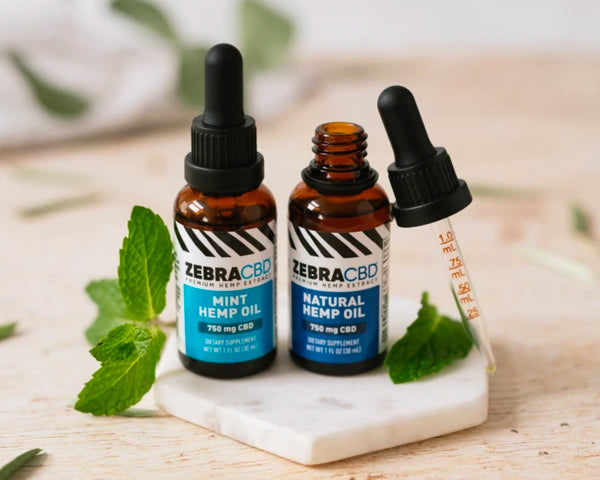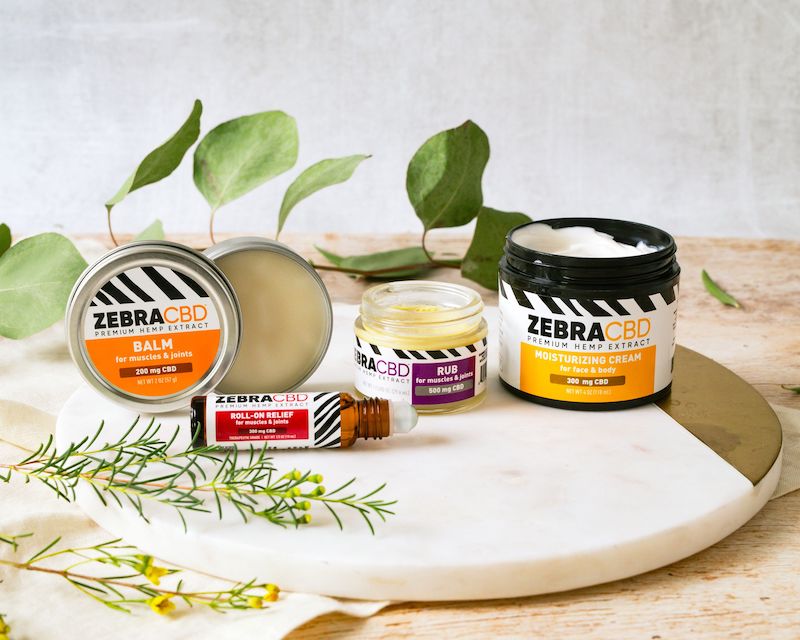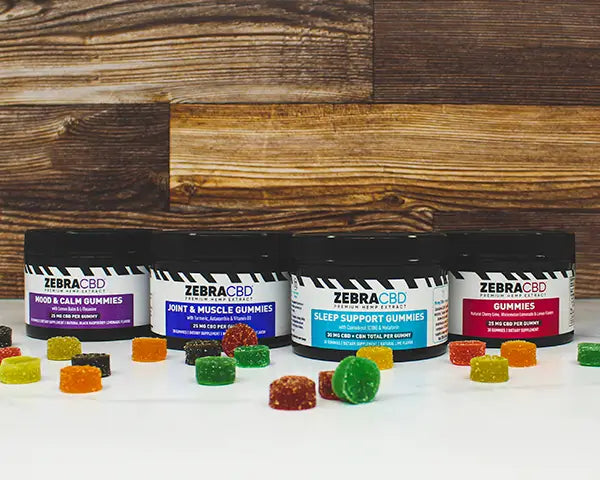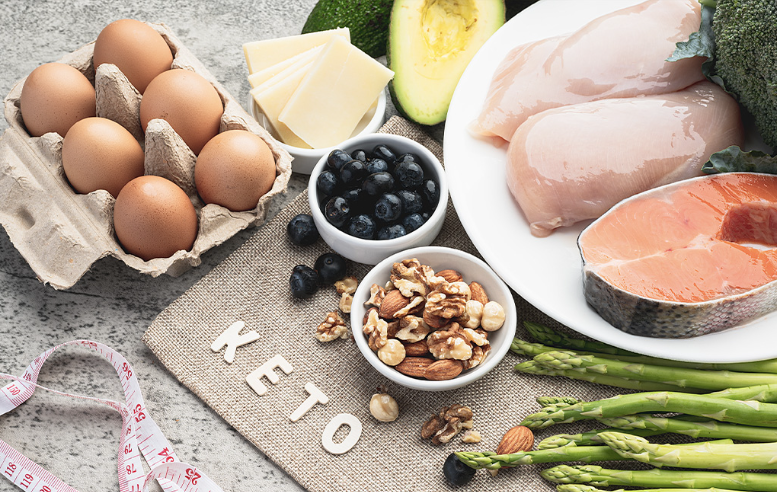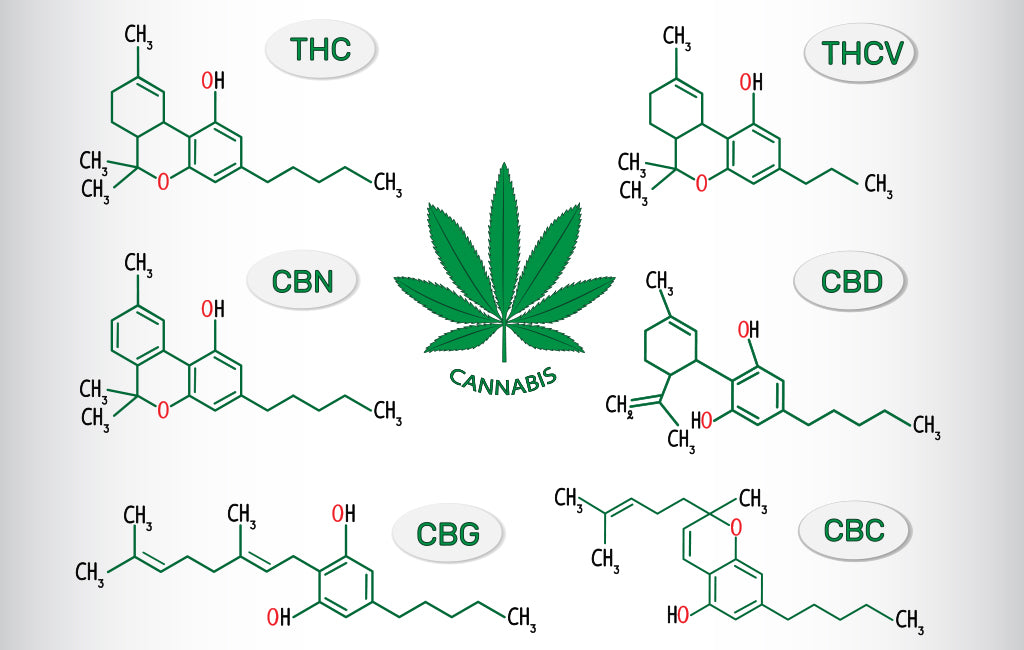
The cannabis plant harbors a variety of different types of naturally occurring components called cannabinoids in its stem, leaves and flower buds. When smoked, ingested or applied topically, these cannabinoids have been found to have various wellness-promoting effects.
More specifically, cannabinoids interact with your body’s endocannabinoid system (ECS) to produce calming and tension-relieving benefits, much like a runner’s high. But how many different types of cannabinoids are there? That’s up for debate.
Today, researchers hypothesize that there may be more than 100 types of cannabinoids in the cannabis plant, and at least 60 have already been identified. However, eight cannabinoids are the most common:
- THC
- THCV
- CBD
- CBDV
- CBG
- CBGV
- CBC
- CBN
A Brief Explanation of Cannabinoids
The cannabinoid compound is organic and naturally occurring and found within the cannabis plant. When naturally produced by the plant, cannabinoids first appear in their acidic form. For example, CBD first appears as CBDA. Once exposed to heat and sunlight, it converts into CBD through a process called decarboxylation. Read our guide on CBDA vs. CBD to learn more.
Decarboxylation is a chemical process that activates the effects of many types of cannabinoids. To that end, two catalysts of decarboxylation are heat and time. When components of the cannabis plant are exposed to these elements, they undergo a chemical transformation.
As such, many cannabinoids can be converted into different forms of cannabinoids, which can greatly influence how they affect the body when they come into contact with the endocannabinoid system.
The Endocannabinoid System and Cannabinoids
The endocannabinoid system (ECS) is a vast network of receptors and chemical signals that help to regulate the body’s systems and processes. In other words, it works to maintain your body’s homeostasis and equilibrium.
The system itself is comprised of endocannabinoids, which is a naturally occurring chemical compound in the body that helps nerve cells communicate with one another. There are two main types of endocannabinoids within the body:
- Anandamide (AEA) – First to be discovered, this endocannabinoid helps to regulate appetite, motivation and pleasure by binding to the CB1 receptor within the ECS. Naturally, it’s synthesized within the brain.
- 2-Arachidonoylglycerol (2-AG) – Present in the central nervous system, it also activates the CB1 receptor to help regulate the circulatory system.
As touched on, the endocannabinoids work with two types of receptors:
- CB1 receptor – These receptors are present in the central and peripheral nervous systems, as well as the brain. When CB1 receptors are activated, they can produce feelings of euphoria by emitting serotonin, dopamine and glutamate.
- CB2 receptor – Found in the immune and gastrointestinal systems, CB2 can help to promote homeostasis and health.
Much like endocannabinoids, cannabinoids — which are not naturally produced in the human body — can bind to and interact with CB1 and CB2 receptors. Depending on the type of cannabinoid, they may be able to bind to one or both. However, some cannabinoids cannot bind to either and merely interact with the receptors indirectly, such as CBD. When used, thecannabis product attaches to the receptors, changing thechemical compound of the cells. Thepsychoactive properties ofcannabis use then create anintoxicating effect on thehuman body.
When cannabinoids interact with the ECS, they can help the body to maintain homeostasis, promoting wellness and vitality in the process.
Cannabinoid Categories
As stated, there are eight main types of cannabinoids found in the cannabis plant. Each type has its own set of interactions and benefits.
#1 THC
THC, also known as tetrahydrocannabinol or Delta-9 THC, is perhaps one of the most widely known cannabinoids. It’s present in marijuana products and can havepsychoactive properties
THC ranks relatively high in terms of bioavailability, meaning it’s fast-acting once ingested into the body. It’s especially powerful because it can also bind to both the CB1 and CB2 receptors, which gives it influence over many of your body’s functions.
In general, THC may produce a variety of effects and health benefits, and can ease:
- Aches
- Nervousness
- Stomach discomfort
- Appetite
- Mood
- Chronic pain
- Neurological disorders such as anxiety or depression
#2 THCV
Less common than THC, THCV or tetrahydrocannabivarin is a type of chemical cannabinoid that’s closely related to THC. However, it has a slightly different molecular structure and provides different effects.
Rather than activating CB1, it blocks the receptor, which may:
- Repress your appetite
- Reduce unease or nervousness
- Regulate the circulatory system
THCV is most commonly found in African Sativa strains of cannabis. Additionally, it produces fewer psychoactive effects than THC.
#3 CBD
CBD is the non-psychoactive cousin of THC that comes from the hemp plant. It’s gained notoriety for its calming properties. While it does not bind with the CB1 or CB2 receptors, it may interact indirectly with the receptors within the ECS to promote feelings of relaxation.
Many implement CBD into their diet or wellness routine to help:
- Ease discomfort
- Reduce nervousness
- Relief stomach discomfort
- Improve sleep
- Promote pain relief
You can find CBD in oils, edibles and topical solutions at your local grocery store, health shops or online marketplaces. There are also a variety of tasty CBD-infused eats on the market, including CBD-infused beverages like energy drinks.
#4 CBDV
Also non-psychoactive, CBDV can be found in Indica cannabis strains sourced from Asia or Africa, or in strains with low levels of THC.
It possesses a different molecular structure than CBD and affects the neurochemical pathway of the capsaicin receptors within the peripheral nervous systems, as well as the endocannabinoid receptors.
You can find CBDV tinctures and resin to add to your dishes or smoothies.
The benefits of CBDV are very similar to CBD, which may include:
- Ache reduction
- Mood improvement
#5 CBG
Found in nearly all cannabis plants, CBG is naturally produced in its acidic form, CBGA — which is the mother cannabinoid of many types of cannabinoids, including CBD and THC.
Farmers will typically harvest underdeveloped cannabis plants for CBG because there’s often a lower concentration of CBG as the plant ages into THC. That’s why there are typically high concentrations of THC in matured cannabis plants.
However, because CBG is significantly less prevalent in the mature cannabis plant than CBD or THC, it can often be quite expensive. CBG primarily comes in the form of oils or tinctures.
CBG can bind to both the CB1 and CB2 receptors to enhance pleasure and motivation. Generally, CBG has low to nonexistent psychoactive effects. Instead, it’s been known to:
- Relieve aches
- Improve mode
- Aid skin health
- Regulate appetite
#6 CBGV
A lesser-known cannabinoid of the Sativa cannabis plant, CBGV is chemically similar to CBG and produces no psychoactive effects. It may work within the endocannabinoid system to help cannabinoids in THC effectively bind to the system’s two receptors. This makes the effects of THC more potent.
The CBGV cannabinoid may also improve:
- Skin health
- Body discomfort
- Appetite
The presence of CBGV within the cannabis plant can also act as an insecticide to ward off crawling predators.
#7 CBC
Also derived from CBGA, CBC is a type of cannabinoid that may help with brain development to improve:
- Memory
- Mood
- Aches
CBC does not interact directly with the endocannabinoid receptors, CB1 and CB2.
However, it may block the effects of THC within the brain. You can take CBC in the form of tablets or pills, as well as tinctures and oils.
#8 CBN
When THC ages or is heated, it converts into CBN. That’s why some cannabis strains lose potency over time. Because CBN derives from THC, it is psychoactive. However, it’s considerably less mind-altering than THC itself.
CBN is often infused into THC products — like gummies — to promote milder effects. There are also tinctures, oils and capsules available on the market.
CBN can affect various bodily functions, which may help to improve:
- Sleep
- Joint discomfort
- Tension
The Evolution of Cannabinoids
Studies have shown that over the last two decades, the chemical structure of certain cannabinoids has changed — specifically, the ratio between CBD and THC.
When a sample from 1995 was compared with a sample from 2014, there was an 8% average increase in THC. Conversely, CBD levels decreased. This is largely due to an increase in indoor cultivation of cannabis plants over the past two decades, as well as hydroponics and genetic manipulations such as cross-breeding.
While an increase in THC may be a benefit to some, it may also pose certain risks to individuals with a lower tolerance for the natural cannabinoids.
Synthetic Cannabinoids
Today, there are also synthetic versions of cannabinoids that have been developed in laboratories. These types of cannabinoids are psychoactive and interact with CB1 and CB2 receptors within the endocannabinoid system. In fact, a synthetic cannabinoid produced in 1988 was found to be 100 times more potent than THC.
Synthetic cannabinoids first emerged in the 1970s upon the discovery of the endocannabinoid system. This occurred when researchers and scientists created synthetic cannabinoids to further study the system and cannabinoids’ effect on the body.
However, since the early 2000s, synthetic compounds are now commercially available within UK and US markets. They are often labeled as “spice,” “K2” or “herbal smoking blends.” Various counterfeit CBD products contain synthetic cannabinoids, which include gummies and vape cartridges.
Common synthetic cannabinoids variants on the market include:
- Aminoalkylindoles, such as Naphthoylindole
- Phenylacetylindole
- Benzoylindoles
- Cyclohexylphenol
Aminoalkylindoles are three times more potent than THC and are found in many herbal products.
However, synthetic cannabinoids are not regulated by international drug treaties and may pose a risk to your health. Some varieties have even been found to contain rat poison to increase the duration of the supplement’s life. Common side effects include:
- Stress
- Stomach discomfort
- Confusion
- Poor coordination
Try CBD With Zebra CBD
There are a variety of cannabinoids available today to help promote overall wellness within your body. From CBC to CBN, cannabinoids help to promote healthy sleep cycles and appetites and reduce feelings of tension or discomfort within the body. However, there’s one that stands out — CBD.
If you’re excited to try the sample platter of cannabinoids, start your journey with Zebra CBD.
Our collection offers a smorgasbord of CBD products, including CBD Premium Oils, CBD Topicals, CBD Chewable Tablets and CBD edibles. Each product is made with organically grown, lab-tested hemp extract.
In fact, our Label Accuracy Guarantee™ ensures that you’re receiving high-quality CBD with ingredients that match the label. We test our products with two third-party labs to ensure you’re getting the best CBD product — free from heavy metals, microbial, herbicides and fungicides.
Source:
U.S. FDA. Statement from FDA warning about significant health risks of contaminated illegal synthetic cannabinoid products that are being encountered by FDA.https://www.fda.gov/news-events/press-announcements/statement-fda-warning-about-significant-health-risks-contaminated-illegal-synthetic-cannabinoid
UNODC Laboratory and Scientific Service Portals. Synthetic cannabinoids.https://www.unodc.org/LSS/SubstanceGroup/Details/ae45ce06-6d33-4f5f-916a-e873f07bde02

